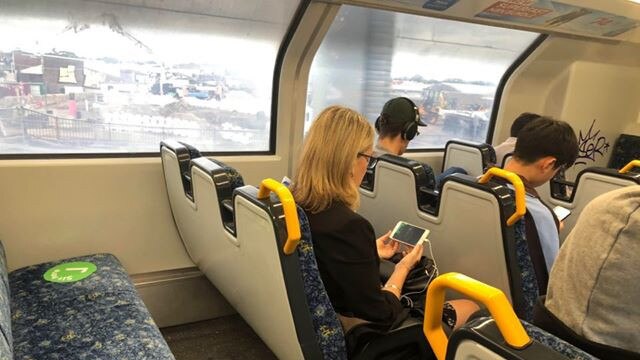‘Home sweet work’ is set to be the new normal
As businesses reopen, has become apparent that we can’t get everyone in to town and back to work safely.

As businesses start to open their doors, it has become apparent that we simply cannot get everyone in to the big cities and back to work safely.
This week, the Institute of Sensible Transport released research showing that in Melbourne, to ensure social distancing, the public transport system will need to shed seven out of every eight users.
Driving to work instead won’t solve the problem. Unless 85 per cent of public transport users in Melbourne switch to cycling, walking, or just keep working from home, major traffic jams will result. And the extra parking space needed to accommodate all the cars is more than double the size of the CBD.
In NSW, capacity on public transport has been slashed, while at the same time the Transport Minister asked workers to commute into the city outside peak hours. Too bad if the boss wants you there at 8.30am. In Sydney, trains will run at 24 per cent capacity with no more than 32 to a carriage. Buses will run at 14 per cent capacity, and only 12 will be allowed on at a time. Bus drivers though, have been left bewildered; they have been advised not to enforce these social distancing rules and told to pick up all schoolchildren and vulnerable passengers, regardless. Just how a driver is supposed to determine, from a distance, and while driving, whether someone standing by the side of the road is a vulnerable passenger was not explained.
Despite how devastating the shutdown was, in time we will see it as the comparatively simple bit. The getting up off the mat and dusting ourselves off part is going to prove more challenging. Getting to work is going to be only the start of the problem. The opening up of our interactions, the return of our confidence, bringing back various workforces — these are the parts of our recovery that will prove complex, difficult and frustrating.
For the foreseeable future, industrial disputes will likely increase. I do not mean strikes, but rather true disagreements between bosses and workers; arguments over who is coming back to work, or not; where that work will be performed — in an office or at home; and for how many hours a day or week.
Since the shutdown, many employers have discovered that work-from-home arrangements are desirable. There seems to be no reason not to make them permanent, and there are both cost and productivity benefits for doing so.
Workforces, though, are diverse, and so different workers have different opinions. Not everyone wants to work from home. Anecdotal evidence seems to indicate that workers who are happy with their home environments are happy to work from home. Those who are not quite so well set up prefer to leave their home in the morning and head into an office.
Some workers express a preference for office work, because of the social interactions that an office provides. Yet employers are not obligated to provide a social life for their staff. As one boss said to me this week when detailing the staggering costs of the currently empty office: “Everyone wants to come back but only so they can chat to their friends, whereas I realise now it suits me if they continue to work from home.”
An employer is not obligated to provide an office, but where one has been provided in the past, we can anticipate disputes will arise.
Where a worker works from home, the employer is still expected to provide a safe workplace, and is still liable for accidents and injury. If an employee trips over a piece of their own torn carpet during working time, the argument will be had over who pays for the injury, and based on the current system the employer is ultimately liable.
Where work from home doesn’t suit the business, employers want people to come back as soon as circumstances allow. Here, we can expect disputes to arise too.
Some staff will be happy to return, but others may believe they can do their job at home just as well. They may not feel safe travelling to work on the train or bus, catching lifts, mixing with people, buying lunch from shops, and so on.
Bringing reluctant workers into work on time safely, through traffic jams, with reduced transport options and at the times that suit the business, will prove to be a challenge. Once people are at work, providing a safe workplace is the next hard task.
If an employee has downloaded the tracing app and they catch the virus, they will likely be able to identify the infection source and pin the blame on the boss. If the virus was caught on the train, when coming to work, the employer is liable. If it was caught during work hours, for example in a meeting, in the tea room, or standing in line at a sushi shop buying lunch, the employer is also liable.
Employers will find that making people work from home will prove the least risky, from a health and safety point of view. They can have long, broad safety policies written and make workers sign them — to ensure they provide their own safe workplace.
Ultimately, employers have the right to decide how many jobs they can provide, where those jobs will be located, who will fill them, and under what conditions. Soon, everyone will realise that because of transport and workers compensation issues, vast numbers of workers will have to keep working from home until there is a reliable vaccine, or a cure.


